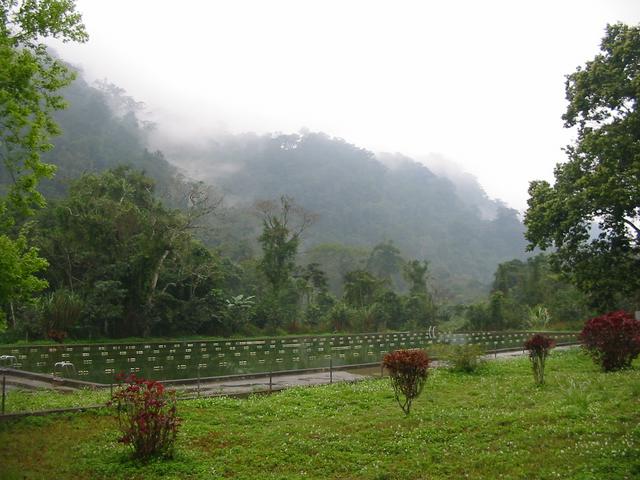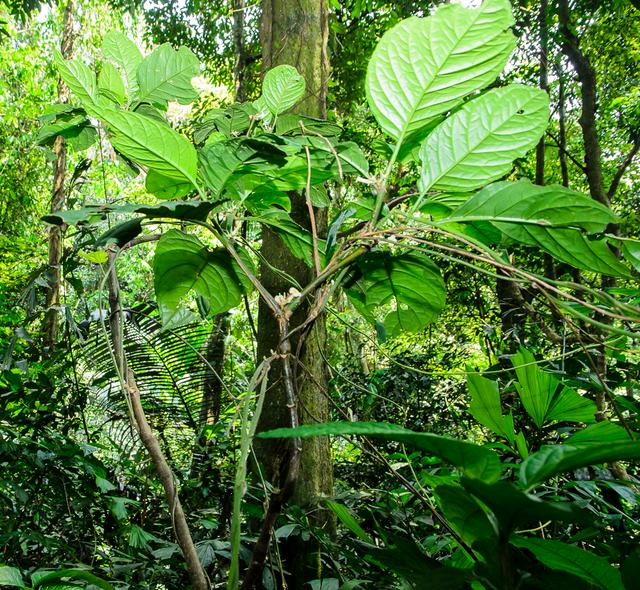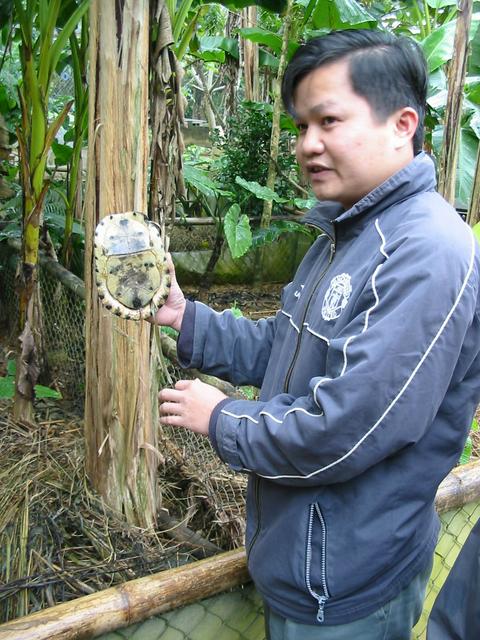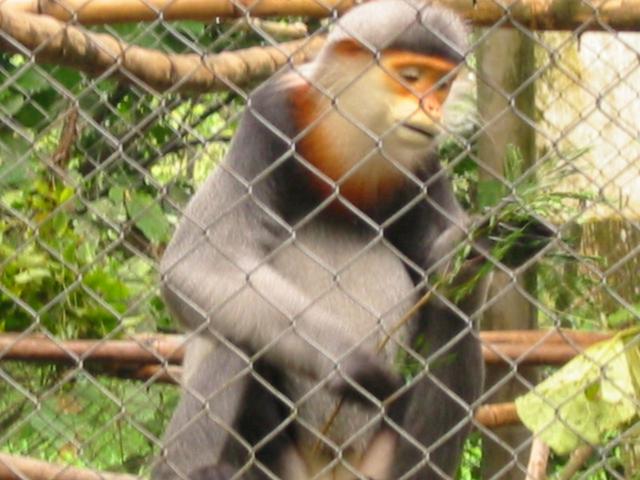Cuc Phuong National Park (Vietnamese: Vườn quốc gia Cúc Phương) is in Northern Vietnam, 40 km away from Ninh Binh city. It is Vietnam’s largest national park and one of the most important biodiversity sites in the country. It is home to hundreds of species of flora and fauna. The park can be visited from Hanoi as a day trip or visitors can stay at the park’s lodgings for a longer stay. Visiting the park is a terrific opportunity to get a close look at Vietnam’s nature. Fees generated from tourism help protect the parks wildlife and improve the local economy. The best time of the year to visit the park is during the dry season, from Nov-Feb.

 120 km southwest of Hanoi on 22,200 hectares of rainforest, Cuc Phuong National Park is the centrepiece of Vietnam’s conservation efforts and one of the most accessible parks in the country. Vietnam’s first and largest national park, Cuc Phuong's beauty and a few of its thousands of species of plants and animals can be seen with the help of a park ranger. If you’re not interested in hiking up and down the karst mountains, a good alternative is the easy but rewarding trip to the primate and turtle rehabilitation and breeding centres.
120 km southwest of Hanoi on 22,200 hectares of rainforest, Cuc Phuong National Park is the centrepiece of Vietnam’s conservation efforts and one of the most accessible parks in the country. Vietnam’s first and largest national park, Cuc Phuong's beauty and a few of its thousands of species of plants and animals can be seen with the help of a park ranger. If you’re not interested in hiking up and down the karst mountains, a good alternative is the easy but rewarding trip to the primate and turtle rehabilitation and breeding centres.
In 1960 Cuc Phuong was made into a forest reserve and in 1962 Cuc Phuong National Park was dedicated by Ho Chi Minh, who reminded the Vietnamese people that protecting the environment protects their future. But mankind's relationship with Cuc Phuong began long before Ho's visit. The remains of prehistoric humans dating 7,000-12,000 years ago have been found in the numerous caves in the park. In 1789 the Quen Voi section of the park was the site of a major battle in the civil war between Nguyen Hue and Thanh Long. More recently, conflicts have emerged between the government and 2,500 Muong ethnic minority tribesmen who live, farm, and hunt in the park. In 1987, 500 Muong were relocated outside of the park and international conservation groups have worked to eliminate poaching by employing locals in the park and selling Muong handicrafts in gift shops.
Cuc Phuong is in the foothills of the northern Annamite Mountains. The park consists of verdant karst mountains and lush valleys. Elevation varies from 150-656 m at the summit of May Bac Mountain, or Silver Cloud Mountain. The limestone formations produced numerous caves, many of which are accessible for exploration.
Cuc Phuong is home to a large range of flora and fauna. Inhabitants of the park include 97 species of mammals, most notable are the endangered langurs; 300 species of birds; 36 reptilian species; 17 species of amphibians; 11 species of fish; 2,000 species of vascular plants, and thousands of species of insects, most of which do not bite. A number of species in the park are listed on Vietnam Red Book of endangered species.
Primates in the park include macaques, gibbon, Francois' leaf monkey and slow loris. Other mammals including bats, porcupine, flying squirrel, small striped squirrel, belly-banded squirrel, and the rare giant black squirrel. In the past Asiatic black bears, wild dogs, and tigers have been spotted in Cuc Phuong, but over-hunting and lack of prey have jeopardized the existence of these species within the park. Leopard, clouded leopard, and jungle cat may still stalk prey in Cuc Phuong.
Bird species include bar-backed partridge; scaly-breasted partridge; silver pheasant; red jungle fowl; grey peacock-pheasant; laughing thrushes; red-vented barbet; green-eared barbet; scimitar-billed babblers; brown hawk owl; scarlet minivet; racket-tailed drongos; racket-tailed magpie; white-winged blue magpie. Migrant species include thrushes, flycatchers, tits, finches, pipits amongst others. Hornbills can also be spotted in the forest.
An endemic sub-species of subterranean cave fish is also located in the park.
Mosquitoes and leeches are present in the park, but they are not as bad as you may imagine and repellent keeps at least the mosquitos away.
Flora in the park includes multi-layered canopy with trees up to 70 m in height.; flowers, including orchids; ferns with amazingly tall leaves; and an abundance of lianes and cauliflory. The park also contains plants used as spices and medicines as well as edible fruits, nuts, and shoots.
The average temperature in Cuc Phuong is 21 °C, with a mean winter temperature of 9 °C. High temperatures can reach above 30 °C and lows are just above 0 °C. At the low elevations in the valley the temperature is hot and humid while at higher elevations the temperature drops and frostbite is a threat. On average it rains more than 200 days a year. The average annual rainfall is 2,100 mm. The dry season is Nov-Feb, the driest months being Dec-Jan.
The Visitor’s Centre at park headquarters is a good place for information about Cuc Phuong.
A permit to enter the park can be purchased at the park headquarters, 40,000 dong adults, 20,000 dong children (2016).
Scooter parking costs 3,000 dong at Park Center.


- Endangered Primate Rescue Centre. 08:00 - 11:30 and 13:30-17:00. An important rehabilitation centre for Vietnam's critically endangered and majestic primates. Langurs, loris, and gibbon species are housed at the centre and include the critically endangered Delacour's Langur, golden-headed langur, Tonkin snub-nosed monkey and black crested gibbon.
The centre was established in 1993 with the help of the Frankfurt Zoological Society and has grown to 100 animals in 30 cages, 4 houses, and two semi-wild enclosures. The primate species at the site were confiscated from wildlife smugglers and include representatives of 16 Indochinese primates. The centre can be visited during the day and donations are encouraged. A small gift stand is in the centre. The centre is a 10-minute walk from the park headquarters. 30,000 dong, price also includes admission to the Turtle Conservation Centre. - The Cuc Phuong Turtle Conservation Centre. 08:00 - 11:30 and 13:30-17:00. It was established in 1998 and is home to some of the most endangered turtles in Vietnam. Six hundred turtles representing 15 of Vietnam’s 23 native species are bred at the centre and released back into the wild. At the centre it is possible to see hatchlings and adult turtles. The turtles at the centre are mostly specimens rescued from smugglers who supply the illegal trade in Vietnamese turtles to China, where they end up on restaurant menus. The centre can be visited during the day and donations are encouraged. A small gift stand is located in the centre.
- Carnivore and Pangolin Conservation Centre, +84 303 848 006. 14:00 - 17:00 and 18:30-20:00. Houses civets, including the rare Owston’s civet, and other small carnivores (including weasels, otters, and wild cats) and pangolins rescued from the wildlife trade. Renovated in early 2016, it's now open and welcomes its first visitors.
- Botanical Garden. It's a good place to take a stroll and get an introduction to the region’s flora. Early in the morning you will hear birds singing, accompanied by perhaps a gibbon or two. Admission free. To open the garden's gate one needs to take keys at the information center.
- Observation Lookout. Steep steps leading to 300 m height hill offering prefect views over the valley.
Endangered Primate Rescue Centre. 08:00 - 11:30 and 13:30-17:00. An important rehabilitation centre for Vietnam's critically endangered and majestic primates. Langurs, loris, and gibbon species are housed at the centre and include the critically endangered Delacour's Langur, golden-headed langur, Tonkin snub-nosed monkey and black crested gibbon.
The centre was established in 1993 with the help of the Frankfurt Zoological Society and has grown to 100 animals in 30 cages, 4 houses, and two semi-wild enclosures. The primate species at the site were confiscated from wildlife smugglers and include representatives of 16 Indochinese primates. The centre can be visited during the day and donations are encouraged. A small gift stand is in the centre. The centre is a 10-minute walk from the park headquarters. 30,000 dong, price also includes admission to the Turtle Conservation Centre.
The Cuc Phuong Turtle Conservation Centre. 08:00 - 11:30 and 13:30-17:00. It was established in 1998 and is home to some of the most endangered turtles in Vietnam. Six hundred turtles representing 15 of Vietnam’s 23 native species are bred at the centre and released back into the wild. At the centre it is possible to see hatchlings and adult turtles. The turtles at the centre are mostly specimens rescued from smugglers who supply the illegal trade in Vietnamese turtles to China, where they end up on restaurant menus. The centre can be visited during the day and donations are encouraged. A small gift stand is located in the centre.
Carnivore and Pangolin Conservation Centre, +84 303 848 006. 14:00 - 17:00 and 18:30-20:00. Houses civets, including the rare Owston’s civet, and other small carnivores (including weasels, otters, and wild cats) and pangolins rescued from the wildlife trade. Renovated in early 2016, it's now open and welcomes its first visitors.
Botanical Garden. It's a good place to take a stroll and get an introduction to the region’s flora. Early in the morning you will hear birds singing, accompanied by perhaps a gibbon or two. Admission free. To open the garden's gate one needs to take keys at the information center.
Observation Lookout. Steep steps leading to 300 m height hill offering prefect views over the valley.
Exploration of Cuc Phuong's many limestone caves makes a rewarding excursion. The caves include Thang Khuyet Cave, Con Moong Cave, Pho Ma Cave, Nguoi Xua Cave and the Cave of Prehistoric Man.
- Cave of Prehistoric Man. It is the site of the one of the earliest discoveries of human habitation in Vietnam. Excavated in 1966, the cave revealed human graves, stone axes, pointed bone spears, oyster shell knives, and tools for grinding dating back 7,500 years. These artifacts have long been removed and the cave is open to tourists. The entrance to the cave is littered with picnic refuse and spent incense sticks, but if you duck under the first crevice to the right you’ll find a stairway that takes you 10 m up for further exploration. Make sure to bring a torch (flashlight).
Cave of Prehistoric Man. It is the site of the one of the earliest discoveries of human habitation in Vietnam. Excavated in 1966, the cave revealed human graves, stone axes, pointed bone spears, oyster shell knives, and tools for grinding dating back 7,500 years. These artifacts have long been removed and the cave is open to tourists. The entrance to the cave is littered with picnic refuse and spent incense sticks, but if you duck under the first crevice to the right you’ll find a stairway that takes you 10 m up for further exploration. Make sure to bring a torch (flashlight).
Thousand Year Old Tree.
Palace Cave.
Ancient Tree.
- Van Long Preserve. Near Cuc Phuong National Park is a preserve at Van Long where you can see Delacour’s langur in the wild. Cuc Phuong’s park headquarters can help arrange a trip to Van Long.
Van Long Preserve. Near Cuc Phuong National Park is a preserve at Van Long where you can see Delacour’s langur in the wild. Cuc Phuong’s park headquarters can help arrange a trip to Van Long.
- Bird-watching. Ornithologists flock to Cuc Phuong to catch a glance of silver-pheasants, red-collared woodpeckers, brown hornbills, and bar-bellied pitas and others from among the three hundred species that inhabit the park.
- Tour guides are available for a reasonable fee and can take you on day or nighttime treks, which is probably the best way to spot Cuc Phuong’s numerous little creatures. Night- spotting trek can be arranged at the park information kiosk, it starts at 18:30, lasts for one hour and costs 400,000 per a group of maximum 4 people (2016).
- The park headquarters can also arrange river rafting trips and tours catering to your needs, e.g. caving, insects, reptile and amphibian spotting, biodiversity hotspots, orchid/flower trails, historical relics.
Dozens of trails cut through the forest and can be used for simple hikes for an hour or two-day treks through the forest. Trekking options include loop trails that take only a few hours of moderate walking to a two-day trek across the park. If you do decide to get off the path and into the brush, make sure you are wearing a long sleeved shirt and long pants. The prickly vines will make mincemeat out of any exposed flesh and the disgusting, yet harmless, leeches will find you to be a quick and easy lunch.
Extensive treks include a 16-km Muong Hamlet trek through primary forest and one night in a traditional stilt house; 20-km camping Jungle trek, which can be further extended by 10 km to include Muong village.
- Botanical Garden Loop Trail. 3 km, 1.5-2 hours, easy.
- Observation Lookout. 300m + return, 0.5-1 hour, moderate.
- Mac lake mountain peak, guide required.
- Cave of the Prehistoric Man. 300 m, 0.5 - 1 hour, easy.
- Fossil and Ancient Tree Loop Trail. 9-km loop trail, 3 - 4 hours, moderate, guide required.
- Thousand Year Old Tree Loop Trail and Palace Cave. 7-km loop trail, 2-3 hours, moderate. A well-established trail.
- Ancient Tree. 3 km + return, 1.5-2 hours, a paved easy path.
- Climb to Cuc Phuong's tallest peak - Silver Cloudy Peak.
- Ngan Hang cave. An easy path, 2 – 3 hours, guide required.
- Muong village. An easy path, 1 – 2 days, guide required.
Bird-watching. Ornithologists flock to Cuc Phuong to catch a glance of silver-pheasants, red-collared woodpeckers, brown hornbills, and bar-bellied pitas and others from among the three hundred species that inhabit the park.
Tour guides are available for a reasonable fee and can take you on day or nighttime treks, which is probably the best way to spot Cuc Phuong’s numerous little creatures. Night- spotting trek can be arranged at the park information kiosk, it starts at 18:30, lasts for one hour and costs 400,000 per a group of maximum 4 people (2016).
The park headquarters can also arrange river rafting trips and tours catering to your needs, e.g. caving, insects, reptile and amphibian spotting, biodiversity hotspots, orchid/flower trails, historical relics.
Gift shops are located at the park headquarters and the lodging in the heart of the forest. A wide selection of T-shirts and woodcarvings by the local Muong minority are available for sale. Proceeds go to support the park and ethnic minority Muong who live in the park.
Grocery shops can be found just outside the park entrance, as well as 2-3 km before the park in the village. They sell snacks, drinks, diary products, fruits and vegetables.
- There are 3 restaurants inside the park, they all tend to be located near lodging sites: at the park headquarters, near Mac lake and at the Park center. All serve basic Vietnamese dishes, nothing fancy. Meals cost 30,000-50,000 dong. Drinks, beers are also available.
- Small local restaurant, just outside park's main gate. Serves more or less the same food as restaurants inside the park.
If you bring food into the park just remember to properly dispose of any plastic wrappings, bottles, and cans.
Small local restaurant, just outside park's main gate. Serves more or less the same food as restaurants inside the park.
